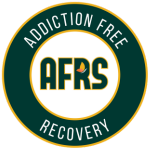Alprazolam, commonly known by its brand name, Xanax, is a widely prescribed benzodiazepine used to treat anxiety and panic disorders. While it can be effective in managing symptoms, prolonged use often leads to dependence, making the alprazolam withdrawal process challenging.
Many individuals who attempt to stop taking the drug experience uncomfortable and sometimes severe withdrawal effects. The body, having adapted to the presence of alprazolam, struggles to function without it, leading to both physical and psychological symptoms.
Understanding the symptoms of alprazolam withdrawal, the withdrawal timeline, and available treatment options can make the transition smoother. This guide provides an in-depth look at what happens during withdrawal, potential side effects, and how to manage the process successfully.
What Is Alprazolam, and Why Is Withdrawal So Challenging?
Alprazolam enhances the effects of gamma-aminobutyric acid (GABA), a neurotransmitter responsible for calming brain activity. This process helps reduce anxiety and panic symptoms.
However, with prolonged use, the brain becomes reliant on the drug to regulate these functions. When alprazolam use is stopped or reduced, the brain struggles to restore balance, leading to withdrawal.
One of the biggest challenges of alprazolam withdrawal is the risk of rebound anxiety. Many individuals who use the drug to manage anxiety disorders find that their symptoms return with greater intensity once they stop taking it.
This often makes the withdrawal process mentally and emotionally overwhelming. Additionally, the risk of severe withdrawal effects, including seizures, makes it crucial to approach managing alprazolam withdrawal with caution.
Early Warning Signs and Symptoms of Alprazolam Withdrawal
The symptoms of alprazolam withdrawal vary depending on the individual, the dosage taken, and the length of use. Some people experience mild discomfort, while others face severe complications.
Symptoms
Common symptoms include heightened anxiety, irritability, restlessness, nausea, and muscle tension. Many individuals also experience sleep disturbances, ranging from difficulty falling asleep to vivid nightmares and night sweats.
Withdrawal Process
As the withdrawal process progresses, symptoms can escalate to more serious physical and psychological effects. Tremors, heart palpitations, and dizziness may occur, while some individuals experience mood swings, depression, and confusion. In extreme cases, withdrawal can trigger seizures or hallucinations, making medical supervision a necessity for a safe detox.
The Alprazolam Withdrawal Timeline: What Happens and When?
The alprazolam withdrawal timeline typically follows a structured pattern, although the exact duration and severity of symptoms depend on several factors, including the individual’s metabolism, dosage, and frequency of use.
Early Withdrawal Symptoms (6 to 24 Hours)
Within the first 6 to 24 hours after the last dose, individuals often experience early withdrawal symptoms such as restlessness, anxiety, headaches, and nausea. These initial effects can be distressing but are usually milder than the peak withdrawal phase.
Peak Withdrawal Symptoms (Days 2 to 7)
Between days 2 and 7, symptoms reach their most intense stage. Severe anxiety, panic attacks, increased heart rate, excessive sweating, and insomnia often mark this period. Some individuals may experience muscle pain, heightened sensitivity to stimuli, and flu-like symptoms. The risk of seizures is highest during this stage, especially for those who stop alprazolam use suddenly.

Post-Acute Withdrawal Symptoms (After the First Week)
After the first week, many of the physical symptoms begin to subside. However, psychological symptoms such as depression, mood swings, and lingering anxiety can persist for weeks or even months. This stage, often referred to as post-acute withdrawal syndrome (PAWS), can make long-term recovery challenging without proper alprazolam withdrawal support.
Common Side Effects That May Arise During Withdrawal
The alprazolam withdrawal side effects can range from mild to life-threatening. Physical effects often include headaches, nausea, muscle pain, dizziness, and difficulty concentrating. Many individuals also experience intense cravings for the drug, which can lead to relapse if not appropriately managed.
On the psychological side, anxiety, depression, irritability, and paranoia are common. Some individuals report experiencing intrusive thoughts or a general sense of hopelessness.
Sleep disturbances, including nightmares and chronic insomnia, further complicate the recovery process. In rare but severe cases, individuals may experience psychosis, hallucinations, or suicidal thoughts, requiring immediate medical intervention.
Medical and Holistic Alprazolam Withdrawal Treatment Options
Seeking professional alprazolam withdrawal treatment can significantly reduce the risk of severe withdrawal symptoms and relapse. Many healthcare professionals recommend a gradual tapering approach, slowly decreasing the dosage over time. This method helps the body adjust and minimizes discomfort.
In medically supervised detox programs, doctors may prescribe medications such as diazepam or clonazepam to ease withdrawal symptoms and prevent dangerous complications. Behavioral therapies, such as cognitive-behavioral therapy (CBT), are also an essential part of recovery, helping individuals manage anxiety and develop healthier coping mechanisms.
For those interested in a more holistic approach, lifestyle changes such as improved nutrition, regular exercise, and mindfulness practices can aid recovery. Alternative therapies like acupuncture, meditation, and yoga have shown promise in helping individuals manage stress and promote emotional stability during withdrawal.
Natural Remedies and At-Home Strategies for Withdrawal Support
In addition to medical treatments, several natural remedies for alprazolam withdrawal can help ease symptoms and support recovery. Maintaining a healthy diet rich in vitamins and minerals can improve overall well-being and brain function. Foods high in magnesium, such as leafy greens, nuts, and whole grains, may help calm the nervous system.
Hydration and Detoxification
Staying hydrated is another crucial part of the alprazolam detox process, as water helps flush toxins from the body and prevent dehydration-related headaches and dizziness. Engaging in regular physical activity, even light exercises like walking or stretching, can help reduce stress and improve mood.
Physical Activity for Stress Reduction
Practicing relaxation techniques, such as deep breathing exercises and progressive muscle relaxation, can also be beneficial. Herbal supplements like valerian root and passionflower have been used for centuries to promote relaxation and improve sleep. However, it is always best to consult a healthcare provider before using supplements.
Detoxing from Alprazolam Safely: What You Need to Know
The alprazolam detox process should never be attempted without medical supervision, especially for those who have been using the drug for an extended period. Withdrawal can trigger severe and sometimes dangerous symptoms, making a structured detox plan essential.
The Importance of Medical Detox Programs
Medical detox programs provide a controlled environment where individuals receive personalized care and monitoring. These programs often include gradual dose reduction, medication-assisted therapy, and psychological support to help manage cravings and emotional distress.

Risks of Sudden Withdrawal
Attempting to quit alprazolam suddenly can lead to severe alprazolam withdrawal complications, including seizures, dehydration, and extreme anxiety. Working with a healthcare provider ensures the process is safe and effective.
Finding Long-Term Support After Alprazolam Detox
Long-term alprazolam withdrawal support is key to maintaining a drug-free life after detox. Many individuals benefit from continued therapy, including group counseling, individual therapy, and peer support groups. Programs like Narcotics Anonymous (NA) and other support communities provide a sense of belonging and encouragement for those in recovery.
Lifestyle adjustments, such as prioritizing self-care, setting realistic goals, and building a strong support network, can also significantly improve long-term recovery. Recognizing triggers and developing coping strategies can help individuals avoid relapse and continue progressing toward emotional and physical well-being.
Your Recovery Starts Here With Addiction Free Recovery
If you or a loved one is struggling with alprazolam withdrawal, professional help is available. At Addiction Free Recovery, we provide personalized treatment plans, medical supervision, and ongoing support to help individuals safely navigate the alprazolam detox process. Our dedicated team understands the withdrawal challenges and is here to guide you through every recovery step.
Take the first step toward a healthier future today. Contact Addiction Free Recovery for a confidential consultation and start your journey toward freedom from addiction.
FAQs
What are the side effects of withdrawal from Xanax?
Common alprazolam withdrawal side effects include anxiety, insomnia, nausea, headaches, dizziness, and muscle pain. Severe cases may involve seizures, hallucinations, or psychosis, requiring urgent medical care.
What can I do if I run out of Xanax?
Do not stop suddenly. Contact your doctor immediately. Manage mild symptoms with hydration and relaxation techniques. Seek emergency care if you experience severe withdrawal symptoms.
What is one of the first signs of withdrawal?
Early symptoms of alprazolam withdrawal include heightened anxiety, irritability, headaches, nausea, and trouble sleeping within 6–24 hours of the last dose.
What are withdrawal symptoms from Xanax, according to Mayo Clinic?
The Mayo Clinic lists anxiety, sweating, tremors, insomnia, and, in severe cases, seizures and hallucinations as common alprazolam withdrawal symptoms.
How long do Xanax withdrawals last?
The alprazolam withdrawal timeline varies, but symptoms peak in the first week and may last up to a month. Some experience prolonged withdrawal (PAWS) for several months.


























